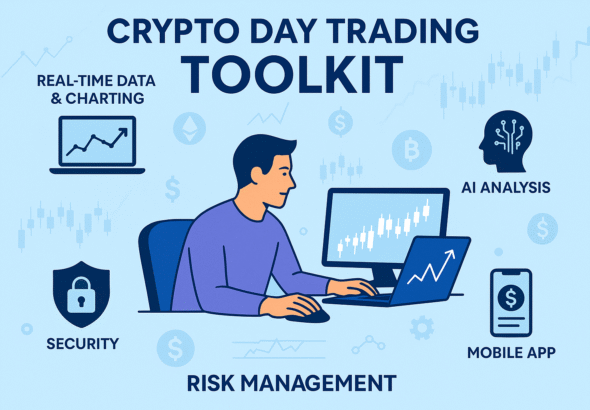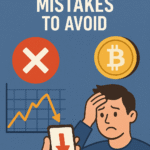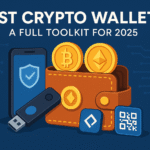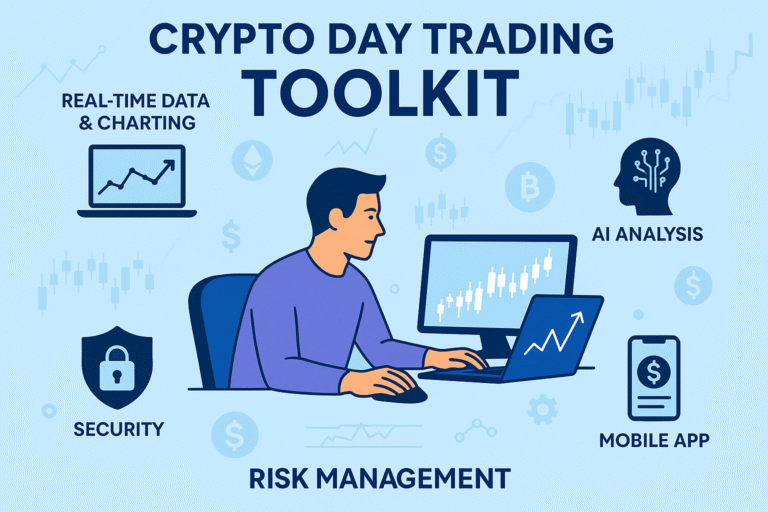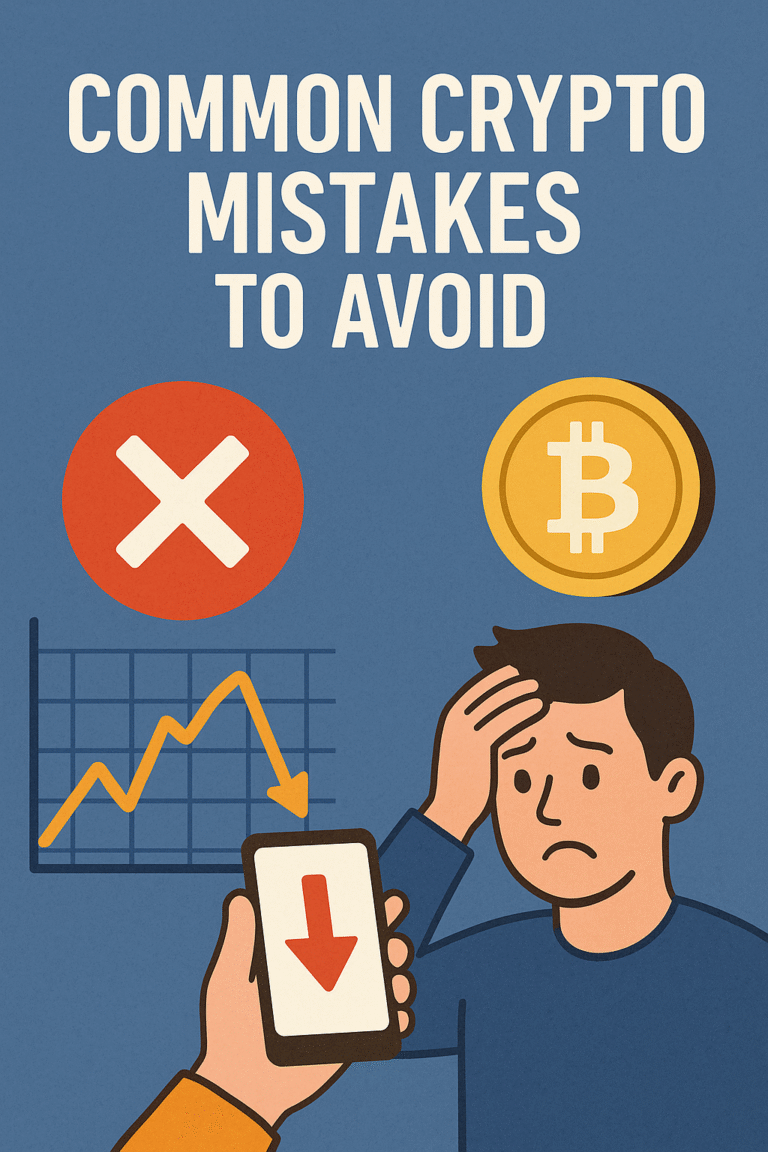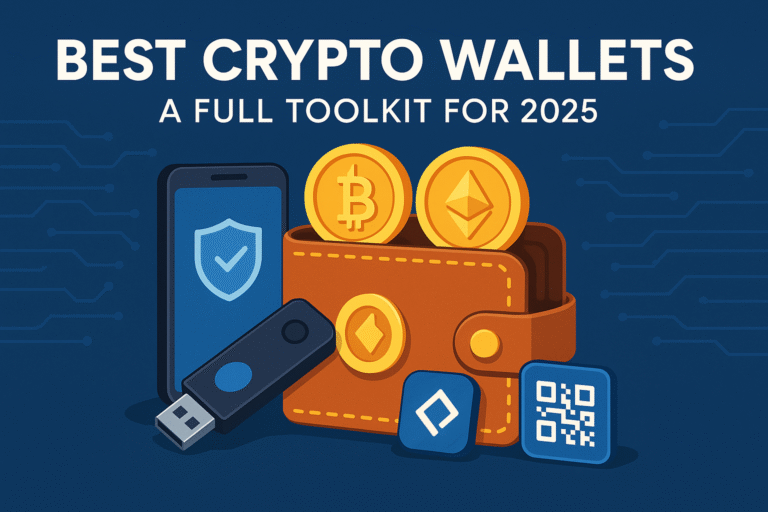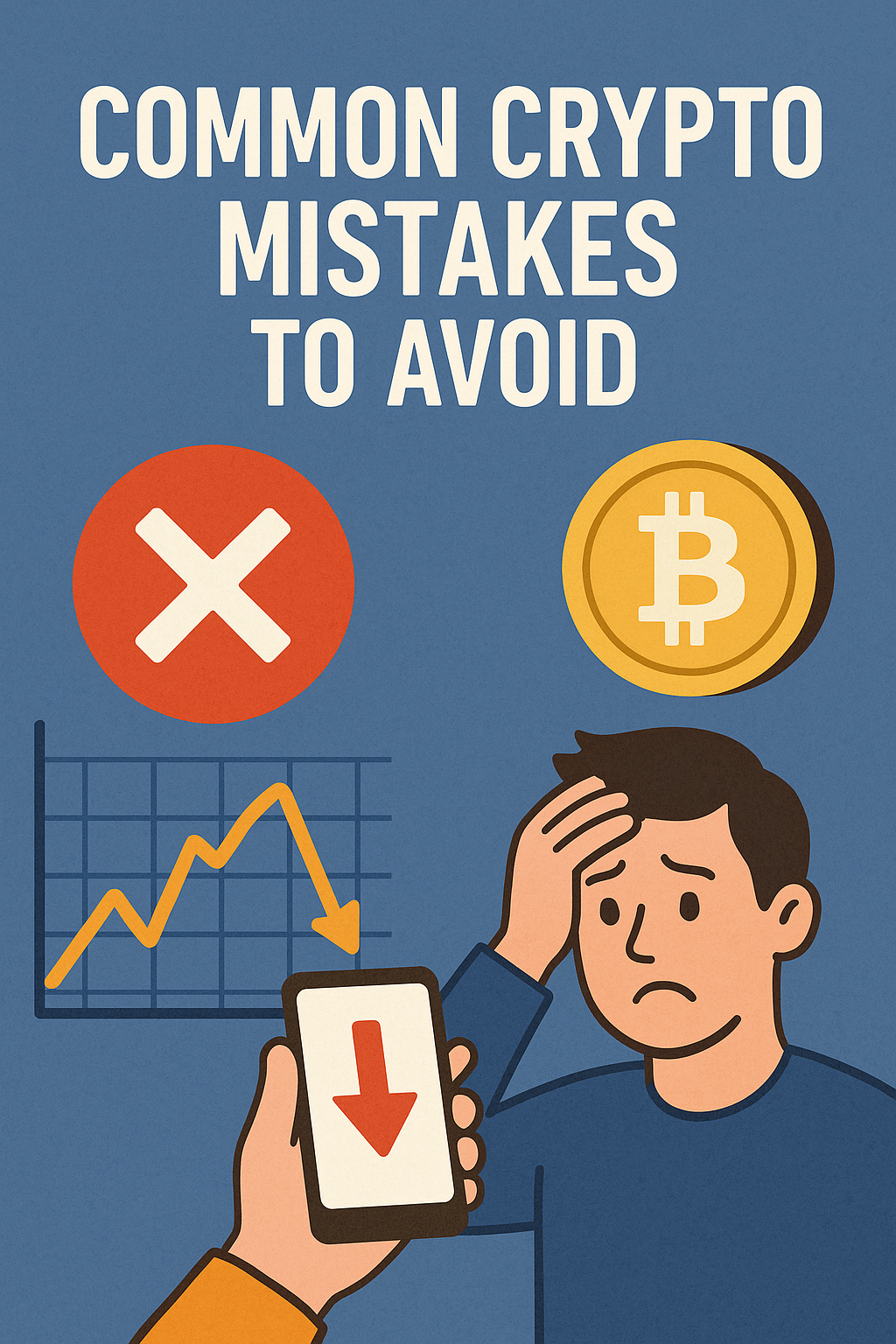
Cryptocurrency offers exciting opportunities, but it’s also filled with pitfalls—especially for newcomers. With evolving regulations and sophisticated scams, staying informed is crucial. This guide highlights 17 common crypto mistakes to help you navigate crypto investing safely.
1. FOMO Investing
FOMO, or “Fear of Missing Out,” is a powerful emotional trigger that often leads investors to buy crypto assets at their peak—usually after they’ve received significant media attention. This herd mentality can result in heavy financial losses when the price corrects. In 2025, with social media and influencers driving much of the crypto hype, FOMO investing is a bigger risk than ever.
The best approach is to set clear investment goals and stick to a strategy based on research and risk tolerance. Avoid rushing into trades because an asset is “trending.” Use technical and fundamental analysis to determine whether an investment is truly worth it.
If you feel an impulse to buy because “everyone else is doing it,” take a step back and reassess. Smart investing is patient investing.
2. Neglecting Research
One of the biggest mistakes beginners make is diving into investments without understanding what they’re buying. The crypto space is full of projects that sound revolutionary but lack real-world use cases, transparency, or development. In some cases, projects are outright scams disguised as legitimate investments.
Before putting your money into any cryptocurrency, you should research:
- project’s whitepaper
- experience of the development team
- problem the coin or token is trying to solve
- how active the community is
- look at social media channels,
- GitHub repositories
- Reddit threads for insights
The more informed you are, the better decisions you’ll make. Don’t rely solely on influencers or hype; instead, build your own knowledge base. Informed investing minimizes risk and increases the chance of long-term gains.
3. Poor Wallet Security
Leaving your funds on an exchange or using an unsecured digital wallet is a recipe for disaster. Exchanges can be hacked, and if you don’t control your private keys, you don’t truly control your crypto. In 2025, hackers are using increasingly advanced techniques to steal digital assets. Their methods may go beyond the usual phishing.
The safest way to store your crypto, especially long-term holdings, is with a hardware wallet like Ledger or Trezor. These devices keep your private keys offline and protected from cyberattacks. Always buy hardware wallets from official sources to avoid tampered products.
Also, avoid using the same passwords across multiple platforms and enable two-factor authentication (2FA) wherever possible. Taking these precautions can save you from irreversible losses. Remember, in the decentralized world of crypto, there is no customer support to retrieve lost assets.
4. Losing Seed Phrases
A seed phrase is a series of 12 to 24 words that serves as the backup to your crypto wallet. If your device is lost or damaged, the seed phrase is the only way to recover your funds. Yet many people write it on a scrap of paper, store it digitally, or lose it altogether.
The importance of safeguarding your seed phrase cannot be overstated. Never store it in a digital format, like in your phone’s notes or in cloud storage. Instead, write it down and keep it in a secure location such as a safe or safety deposit box.
Some people go further by using metal seed phrase backup plates that are resistant to fire and water. No matter how you choose to store it, the key is to make it both secure and retrievable. If anyone gets access to your seed phrase, they have full access to your wallet. Likewise, if you lose it, there is no recovery option.
5. Falling for Scams
Scams in the crypto world come in many forms—fake airdrops, phishing websites, impersonated influencers, Ponzi schemes, and more. In 2025, AI-generated deepfakes and sophisticated bots make these scams even harder to detect.
The golden rule: if it sounds too good to be true, it probably is. Never send crypto to someone promising to “double your money.” Be extremely cautious with unsolicited messages on Telegram, Discord, or X (formerly Twitter).
Always verify website URLs, use browser security extensions, and avoid clicking on unknown links. Educate yourself about common red flags, and don’t let greed override caution. Being scam-aware is just as important as being investment-savvy.
6. Ignoring Fees
Many beginners overlook transaction and network fees, which can significantly eat into profits—especially on congested networks like Ethereum. Fees can range from a few cents to hundreds of dollars depending on the time of day and network traffic.
Understanding and planning for fees helps you avoid unpleasant surprises. Use fee calculators or websites like GasNow and Etherscan to track real-time rates. Consider batching transactions or using Layer 2 solutions like Optimism or Arbitrum to cut costs.
Some platforms also charge withdrawal fees, trading fees, or hidden charges. Always read the fine print before making transactions. Smart fee management can add up to substantial savings over time.
7. Overtrading
The temptation to constantly buy and sell can be strong, especially with 24/7 markets. But overtrading leads to poor decision-making, high fees, and increased tax complexity.
Beginner traders often try to time the market or chase short-term trends, but few succeed this way. Frequent trades increase exposure to slippage and make your portfolio harder to manage.
Instead, focus on building a long-term investment strategy. Set specific entry and exit points, and stick to them. Only rebalance your portfolio periodically rather than reacting to every price move. Less can be more when it comes to trading.
8. Using Leverage
Leverage allows you to borrow funds to amplify your position, but it also amplifies losses. Many platforms offer up to 100x leverage, which may sound appealing but is incredibly risky.
If the market moves against your position even slightly, you could be liquidated—losing your entire investment. This is especially true in crypto, where price swings can be dramatic and sudden.
Unless you’re a highly experienced trader, it’s best to avoid leverage altogether. If you do choose to use it, start very small and always set stop-loss orders. Understand margin requirements and keep your emotions in check. High leverage is not a shortcut to wealth; it’s a fast track to liquidation.
9. Tax Oversights
Crypto taxes are real, and in many countries, tax agencies are getting better at tracking transactions. Whether you realize it or not, buying, selling, staking, or even receiving crypto as income may be a taxable event.
Failing to report accurately can lead to audits, penalties, or worse. Use tax software like Koinly, CoinTracker, or CryptoTaxCalculator to log your trades and calculate liabilities.
Keep meticulous records of all your crypto activities. If you’re unsure how to report, consult a tax advisor familiar with digital assets. Staying compliant not only keeps you legal but also ensures peace of mind.
10. Chasing High Yields
With the rise of DeFi (Decentralized Finance), many platforms offer yields that seem impossibly high. While some are legitimate, many are unsustainable or outright scams.
Projects promising 1000% APY should immediately raise red flags. Often, these high yields are used to lure in capital before a rug pull—a scam where developers disappear with investors’ funds.
Instead of chasing the highest APY, look for well-established protocols with a solid reputation and audited smart contracts. Diversify your yield farming and staking strategies and assess risk-reward carefully. Remember, in crypto, higher returns usually mean higher risk.
11. Not Diversifying
Putting all your eggs in one basket is dangerous in any market, and crypto is no exception. A single project can be delisted, hacked, or lose value overnight.
Diversification spreads risk and helps stabilize your portfolio during market volatility. This doesn’t mean buying dozens of coins blindly. Instead, build a balanced portfolio with a mix of large-cap coins (like Bitcoin and Ethereum), mid-caps, and a few promising small-caps.
Also, consider diversifying across sectors (e.g., DeFi, NFTs, gaming, L1s). Don’t overexpose yourself to one narrative or trend. Smart diversification is a core principle of risk management.
12. Emotional Trading
The crypto market is highly volatile, and emotions like fear and greed can drive poor decisions. Panic selling during a dip or euphoric buying during a rally often leads to regret.
To avoid emotional trading, create a clear plan with target prices, stop losses, and profit-taking levels. Automate trades if possible, and avoid checking prices obsessively.
Also, be aware of your mental state. If you’re stressed or sleep-deprived, delay making decisions. Practice mindfulness and treat trading like a business—not a casino.
13. Ignoring Regulations
Each country has its own rules for crypto, and ignoring them can lead to fines, frozen accounts, or even criminal charges. In 2025, global regulation is increasing, and compliance is more important than ever.
Use licensed exchanges that adhere to Know Your Customer (KYC) and Anti-Money Laundering (AML) rules. Avoid platforms that operate in legal grey areas, even if they offer better returns or fewer restrictions.
Staying compliant protects you legally and financially. It also builds trust with banks, auditors, and potential business partners down the line.
14. Falling for “Pig Butchering” Scams
This manipulative scam involves scammers building a personal relationship with the victim—sometimes over weeks or months—before convincing them to invest large sums. The name comes from the idea of “fattening up” the victim before “butchering.”
Victims are often contacted on dating sites or social media and are slowly groomed into trust. Once invested, they may even be shown fake profits to encourage larger investments. Eventually, the scammer disappears with everything.
Be skeptical of unsolicited investment advice, especially from people you meet online. Never send money or crypto to someone you don’t know personally and haven’t verified. Protect your emotions as well as your wallet.
15. Using Public Wi-Fi
Public Wi-Fi networks are convenient but highly insecure. Hackers can easily intercept unencrypted data, including login credentials and private keys.
Avoid making any crypto transactions on public networks. If you must access an exchange or wallet, use a VPN to encrypt your connection. Mobile networks are generally safer than public Wi-Fi.
Consider installing anti-malware software and security extensions on your devices. Your digital safety is your responsibility in the decentralized world.
16. Skipping Test Transactions
Sending a large amount of crypto without testing the wallet address first is a common and costly mistake. If you mistype the address or copy a wrong one due to malware, your funds could be lost forever.
Always do a small test transaction to ensure the address works and is correct. Once confirmed, you can proceed with the full amount.
This simple step can prevent devastating losses. With no central authority to reverse transactions, it’s better to be cautious every time you send crypto.
17. Forgetting to Set Stop-Loss Orders
A stop-loss order automatically sells your asset when it hits a certain price, protecting you from deeper losses during downturns. Without it, you could see your investment plummet with no safety net.
Stop-losses are especially important in volatile markets like crypto, where prices can crash in minutes. Setting them helps enforce discipline and remove emotion from the equation.
Use technical analysis to set realistic stop-loss points. Combine them with take-profit orders for a balanced risk-reward strategy. Tools like trading bots or platforms with advanced order types can automate this for you.
Conclusion
By avoiding these common mistakes, you can protect your investments and make informed decisions. Stay updated, do your research, and always prioritize security.
How do I report crypto on my taxes?
Report gains and losses as per your country's tax regulations. Use crypto tax software or consult a tax advisor for accuracy.
What is a seed phrase?
It's a set of words that allows you to recover your crypto wallet. Store it offline, securely, and never share it.
Can I recover lost crypto?
In most cases, no. If lost due to scams or errors, there is no way to retrieve it. Always double-check everything.
How much should I invest in crypto?
Only invest what you can afford to lose. Start small and grow your portfolio as you gain experience and confidence.

